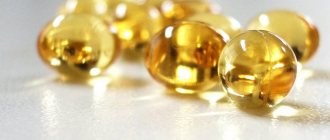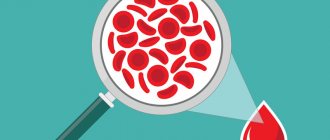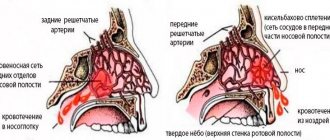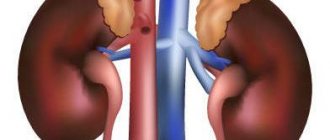History of discovery and research
The first to prove the existence of stem cells was the Russian scientist Alexander Anisimov. This happened back in 1909. Their practical application became of interest to scientists much later, around 1950. It was only in 1970 that stem cells were first transplanted into patients with leukemia, and this treatment method began to be used all over the world.
Around this time, the study of stem cells was singled out as a separate area, separate laboratories and even entire research institutes began to appear, developing methods of treatment using progenitor cells. In 2003, the first Russian biotechnology company appeared, called the Human Stem Cell Institute, which today is the largest repository of stem cell samples, and also promotes its own innovative medicines and high-tech services on the market.
At this stage in the development of medicine, scientists have managed to obtain an egg from a stem cell, which in the future will allow infertile couples to have their own children.
Video: Successful biotechnologies
Where are progenitor cells located?
Stem cells can be found in almost every part of the human body. They are necessarily present in any tissue of the body. Their maximum amount in an adult is contained in the red bone marrow, slightly less in the peripheral blood, adipose tissue, and skin.
The younger an organism is, the more of them it contains, the more active these cells are in terms of the rate of division, and the wider the range of specialized cells to which each progenitor cell can give life.
Consider the list of the best fillers that are popular among cosmetologists and patients.
What is sclerotherapy? Find out here.
I will go to red blood cells - let them teach me
Most of the hematopoietic stem cells in the bone marrow are quiescent - they do not divide. But when the hemocytoblast wakes up, it makes the most important choice - to give rise to a new multipotent stem cell or to start the process of specialization of daughter cells. In the first case, the cell can prolong its “childhood” indefinitely; in the second, the cells enter the next period of their life.
Mature hematopoietic cells begin to divide asymmetrically, which leads to their differentiation and specialization. Precursors of cells are formed that choose “study” - the myeloid path of development, or “army” - the lymphoid path of development.
Myeloid hemocytoblasts develop into platelets, erythrocytes, leukocytes-macrophages, granulocytes (a type of leukocyte - eosinophils, neutrophils or basophils).
Lymphoid hemocytoblasts will give rise to the body's immune defense cells - T-lymphocytes (recognize foreign antigens), B-lymphocytes (produce antibodies), T-helpers (attack foreign cells), NK lymphocytes (provide phagocytosis of foreign agents).
Where do they get the material from?
- Embryonic.
The most “delicious” for researchers are embryonic stem cells, since the shorter the organism has lived, the more plastic and biologically active the precursor cells are.
But if it is not a problem for researchers to obtain animal cells, then any experiments using human embryos are considered unethical.
This is even though, according to statistics, approximately every second pregnancy in the modern world ends in abortion.
- From umbilical cord blood.
Available in terms of morality and legislative decisions in a number of countries are stem cells from umbilical cord blood, the umbilical cord itself and the placenta.
Currently, entire banks of stem cells isolated from umbilical cord blood are being created, which can subsequently be used to treat a number of diseases and the consequences of body injuries. On a commercial basis, numerous private banks offer parents a personal “deposit” for their child. One argument against collecting and freezing cord blood is the limited amount that can be obtained this way.
It is believed that to restore hematopoiesis after chemotherapy or radiotherapy, only a child up to a certain age and body weight (up to 50 kg) will need his own thawed stem cells.
But it is not always necessary to restore such a large amount of tissue. To restore, for example, the same cartilage of the knee joint, only a small part of the preserved cells will be sufficient.
The same applies to the restoration of cells of the damaged pancreas or liver. And since stem cells from one portion of umbilical cord blood are divided into several cryovials before freezing, it will always be possible to use a small part of the material.
- Obtaining stem cells from an adult.
Not everyone is lucky enough to receive their “emergency supply” of stem cells from umbilical cord blood from their parents. Therefore, at this stage, methods are being developed to obtain them from adults.
The main tissues that can serve as sources are:
- adipose tissue (taken during liposuction, for example);
- peripheral blood, which can be taken from a vein);
- red bone marrow.
Adult stem cells obtained from different sources may have some differences due to the cells losing their versatility. For example, blood and red bone marrow cells can give rise predominantly to blood cells. They are called hematopoietic.
And stem cells from adipose tissue differentiate (degenerate) much more easily into specialized cells of organs and tissues of the body (cartilage, bones, muscles, etc.). They are called mesenchymal.
Depending on the scale of the task that scientists face, they may need different numbers of such cells. For example, methods are now being developed to grow teeth obtained from urine from them. There aren't that many of them there.
But given the fact that a tooth needs to be grown only once, and its service life is significant, it does not require much stem cells.
Video: Pokrovsky Stem Cell Bank
Why are stem cells needed?
About the bank Media about us Why are stem cells needed?
Today, probably everyone has heard about stem cells. But there are so many speculations and rumors surrounding this topic that it is very difficult to separate the truth from the fables. Let's try to figure out how stem cells can help us and why we need to preserve them.
What are stem cells?
Stem cells are the precursors of cells from which all human organs and tissues are formed. When conception occurs, during the first month a living lump - an embryo - consists only of stem cells. They are the strongest, but they cannot be used - such a ban has been imposed by the governments of all countries of the world.
Where are stem cells found?
Stem cells are found in small quantities in human bone marrow and adipose tissue. Moreover, with age, their quantity decreases and their quality deteriorates. Scientists have learned to isolate such cells from the bone marrow and use them to treat diseases. But the optimal source of stem cells is the blood found in the placenta and umbilical cord of the newborn. It is in it that the concentration of stem cells is maximum.
How are stem cells obtained?
Stem cells can be isolated from human bone marrow and their number increased - cultivated. Or you can get them from umbilical cord blood or umbilical cord, and this opportunity is available only at the time of birth of the child.
How does this happen? As soon as the baby is born and separated from the umbilical cord, the doctor delivering the baby inserts a needle into the umbilical vein, and from there, from 50 to 250 ml of blood flows out by gravity into a bag with a special anti-clotting substance, which consists of 3-5% of powerful and strong stem cells. After the placenta has passed, the midwife cuts off 10-20 cm of the umbilical cord and places it in a special package, which is delivered to the stem cell bank laboratory.
As you can see, the procedure for collecting stem cells from umbilical cord blood and umbilical cord is completely painless and absolutely safe for both mother and baby. It can be performed both during natural childbirth and during caesarean section.
Then, within 4-6 hours, the biomaterials are delivered to the laboratory. Here they are processed, frozen and stored. Stem cells from cord blood or umbilical cord, frozen under certain conditions, can be stored at extremely low temperatures for decades.
Why do you need to preserve stem cells?
Today medicine can do a lot, but there are diseases against which traditional methods of treatment are powerless. And that’s when stem cells can help. In many cases, they help restore blood, bone marrow, and tissue regeneration after wounds and burns. And for diseases of the immune system and blood, stem cell transplantation is the only radical method of therapy.
One of the problems with this method is the selection of stem cells that are suitable for a particular patient. With personalized storage, all harvested cord blood stem cells will be native to your child and will be ideal for him. And umbilical cord stem cells can be used for therapy for the whole family.
What diseases can stem cells help with?
Today, stem cells have been used throughout the world for decades in the complex therapy of blood cancer and immunodeficiencies of various etiologies.
The use of stem cells has yielded positive results in the treatment of strokes, heart attacks, type 1 diabetes and the growth of cartilage tissue.
The list includes more than 80 diseases. The most severe and common include:
- blood diseases (leukemia) and malignancies;
- diabetes;
- heart disease;
- stroke and brain damage;
- muscular dystrophy;
- Parkinson's disease;
- Alzheimer's disease;
- multiple sclerosis;
- spinal injuries;
- amyotrophic lateral sclerosis;
- systemic lupus erythematosus;
- autoimmune diseases;
- cerebral palsy;
- chronic hepatitis and liver cirrhosis.
What do stem cell banks do?
Stem cell banks process and store samples containing stem cells. Stem cell storage can be public or private. Samples from the public registry can be used by anyone who needs stem cells. During personal storage, stem cells are managed by their owners. Thus, stem cells isolated from the blood of the umbilical cord or umbilical cord belong to the child’s parents. But in this case, they pay for the services for their collection, processing and storage.
What to consider when choosing a stem cell bank:
✓ How many years has the bank been in existence?
The older the bank, the greater the guarantee of stability you receive, the more experience the bank’s employees have in isolating, harvesting and storing stem cells.
✓ Does the bank have a license?
The bank must have a license to collect, transport and store stem cells, issued by the health committee.
✓ On the basis of which institution is the bank located?
The advantage for the bank is that it is located on the basis of a medical institution or research institute. Firstly, because hospitals have an autonomous power supply system. Secondly, the conditions necessary for working with biological material have already been created here.
The bank, like any medical institution, must have round-the-clock security, because the bank contains precious samples of stem cells, a lot of unique medical equipment and a database.
✓ What equipment are its laboratories and storage facilities equipped with?
Today, there are 3 devices on which stem cells can be isolated: a double centrifuge (semi-automated device), Sepax devices (Switzerland) and Macopress (France).
The presence of these devices is mandatory for the successful operation of the bank.
✓ Does the bank have an automatic control system for cryogenic storage facilities?
The bank's cryostorage must be equipped with an IT monitoring system for cryodewars in which stem cell samples are stored. At any time, bank employees can check the storage temperature of the sample and the fullness of the cryodewar. And also receive a report on the storage of the sample for any period of time and save it on the server for archiving.
✓ Does the bank have its own courier service?
To quickly collect umbilical cord blood from the maternity hospital and quickly isolate a sample of stem cells without losing their viability, the bank must have a courier service, whose employees can at any time collect a blood sample from the maternity hospital and deliver it to the bank.
✓ Does the bank conduct scientific research in the field of cell technologies?
It is very important that scientific work is also organized on the basis of the bank, as well as cooperation with leading research institutes and medical institutions of the city.
✓ Does this bank have experience in successfully using umbilical cord blood stem cells?
It would be a good idea to ask the bank for statistics on the demand for samples and experience in using stem cells to treat patients with various diseases.
Storage banks for biological material
Special jars are created to store samples. Depending on the purpose of storing the material, they may be state owned. They are also called registrar banks. Registrars store stem cells from anonymous donors and may, at their discretion, provide the material to any medical or research institutions.
There are also commercial banks that make money by storing samples from specific donors. Only their owners can use them to treat themselves or close relatives.
If we talk about the demand for samples, the statistics are as follows:
- every thousandth sample is in demand at registrar banks;
- material stored in private banks is even less often in demand.
However, it makes sense to keep a registered sample in a private bank. There are several reasons for this:
- Donor samples cost money, sometimes quite a lot, and the amount required to purchase a sample and deliver it to the right clinic is often many times greater than the cost of storing your own sample for several decades;
- a nominal sample can be used to treat blood relatives;
- It can be assumed that in the future, organs and tissues will be restored using stem cells much more often than is happening in our time, and therefore the demand for them will only grow.
Read the next article to find out what thermage cosmetic procedure is.
What is better - biorevitalization or mesotherapy? See the link.
Application in medicine
In fact, the only direction of their use that has already been studied is bone marrow transplantation as a stage in the treatment of leukemia and lymphomas. Some research on the reconstruction of organs and tissues using stem cells has already reached the stage of conducting experiments on humans, but there is no talk of mass introduction into the practice of doctors yet.
To obtain new tissues from stem cells, it is usually necessary to perform the following manipulations:
- collection of material;
- stem cell isolation;
- growing stem cells on nutrient substrates;
- creating conditions for the transformation of stem cells into specialized ones;
- reducing the risks associated with the possibility of malignant degeneration of cells obtained from stem cells;
- transplantation.
Stem cells are isolated from tissues taken for the experiment using special devices called separators. There are also various methods for depositing stem cells, but their effectiveness is largely determined by the qualifications and experience of the personnel, and there is also a risk of bacterial or fungal contamination of the sample.
The resulting stem cells are placed in a specially prepared medium that contains lymph or blood serum of newborn calves. On a nutrient substrate, they divide many times, their number increases several thousand times. Before introducing them into the body, scientists direct their differentiation in a certain direction, for example, they obtain nerve cells, liver or pancreatic cells, a cartilage plate, etc.
It is at this stage that there is a danger of their degeneration into tumors. To prevent this, special techniques are being developed to reduce the likelihood of cancerous degeneration of cells.
Methods of introducing cells into the body:
- introduction of cells into tissue directly in the place where there was injury or tissue was damaged as a result of a pathological process (disease): introduction of stem cells into the area of hemorrhage in the brain or to the site of damage to peripheral nerves;
- introduction of cells into the bloodstream: this is how stem cells are introduced in the treatment of leukemia.
Find out whether it is possible to use stem cells in cosmetology?
We propose to consider what ozone therapy for weight loss is, and how it is performed at home and in salons. Details here.
Everything about the advantages of using stem cells from umbilical cord blood in this article.
Let's sum it up
But in any case, bone marrow cell transplantation is associated with a significant risk to the patient’s health. That is why it is carried out only in case of vital necessity.
Modern bone marrow transplantation techniques have already saved the lives of thousands of patients with blood pathologies.
Umbilical cord blood stem cells were first used in 1987, and today these techniques have already saved more than 10 thousand patients. At the same time, banks of umbilical cord blood stem cells are being developed, because it can be taken no more than 100 ml and only once. When frozen, cells remain viable for 20 years, and it is possible to select donor blood in such banks.
Another direction in the development of stem cell transplantology is fetal therapy, which uses embryonic cells. Their source is abortifacient material. But this is a topic for a completely different article.
Pros and cons of using stem cells for rejuvenation
Study and use in the media is increasingly cited as a way to achieve immortality or at least longevity. Already in the distant 70s, stem cells were administered to elderly members of the CPSU Politburo as a rejuvenating agent.
Now, when a number of private biotechnology research centers have appeared, some researchers have begun to carry out anti-aging injections of stem cells previously taken from the patient himself.
This procedure is quite expensive, but no one can guarantee its result. When agreeing, the client must be aware that he is participating in an experiment, since many aspects of their use have not yet been studied.
Video: What Stem Cells Can Do
The most common types of procedures are:
- introduction of stem cells into the dermis (the procedure is somewhat reminiscent of biorevitalization);
- filling skin defects, adding volume to tissues (this is more like using fillers).
In the second case, the patient’s own adipose tissue and his stem cells are used in a mixture with stabilized hyaluronic acid. Experiments on animals have shown that such a cocktail allows more adipose tissue to take root and maintain volume for a long time.
The first experiments were carried out on people who, using this technique, had wrinkles removed and mammary glands enlarged. However, the data is not yet sufficient for any doctor to repeat this experience on his patient, providing him with a guaranteed result.
Features of this cellular material
Hematopoietic stem cells (hemocytoblasts) have two main properties:
- The ability to undergo asymmetric division, during which two daughter cells are formed, identical to the mother one. But at the same time, the cells do not undergo differentiation. They remain multipotent hematopoietic stem cells. This means that they can follow any of the above specialization paths.
- The presence of differentiating potential in hematopoietic stem cells. This means that stem cells divide and daughter cells begin their specialization, turning into highly specialized red blood cells, platelets, lymphocytes, and leukocytes.
Hematopoietic stem cells in the bone marrow, like all cells in our body, have an age - a short “childhood”, a quickly passing “youth” when the cells choose the “army” or “study”, and a long period of “maturity”.












